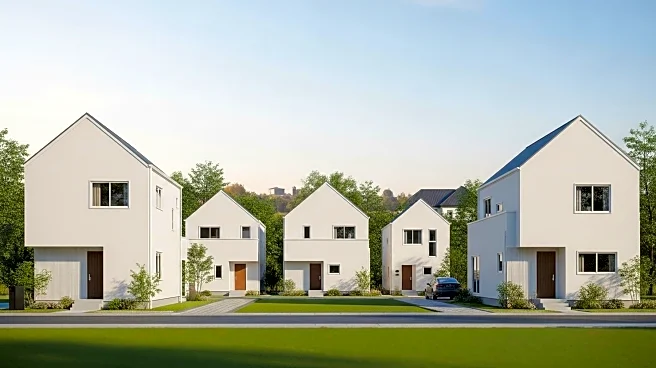What is the story about?
What's Happening?
The median size of new homes in the U.S. has been decreasing over the past decade, with the average size dropping from 2,500 square feet in 2015 to 2,210 square feet. This trend is driven by changing demographics, including an increase in single and child-free home buyers, as well as retirees looking to downsize. The demand for smaller homes is also influenced by housing affordability challenges, prompting builders to cater to these market needs. The fastest-selling segment of the market is homes priced between $200,000 and $350,000, which grew by 50% between 2023 and 2024.
Why It's Important?
The shift towards smaller homes reflects broader economic and social changes, including affordability issues and evolving lifestyle preferences. As more buyers prioritize affordability and minimal maintenance, the housing market is adapting to meet these needs. This trend could impact the real estate industry by increasing demand for smaller, more affordable homes, potentially leading to changes in construction practices and urban planning. Additionally, the trend may influence the types of homes available to first-time buyers and those looking to downsize, affecting their ability to enter the housing market.
What's Next?
As the demand for smaller homes continues, builders and developers may increasingly focus on constructing homes that maximize space efficiency and cater to the needs of diverse buyer demographics. Real estate agents and developers might also explore opportunities in renovating existing smaller homes to meet market demand. The ongoing affordability challenges could lead to further innovations in home design and construction, as well as potential policy responses to address housing accessibility.
AI Generated Content
Do you find this article useful?














